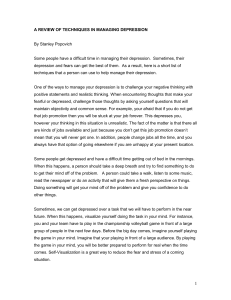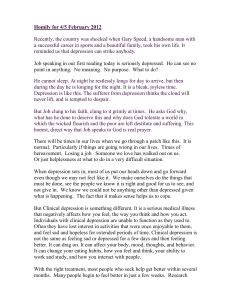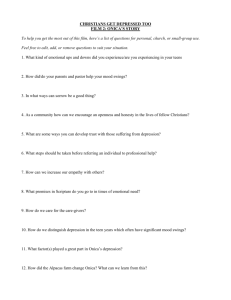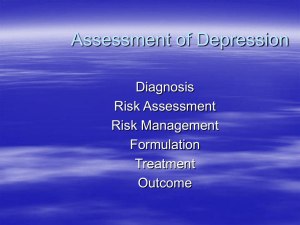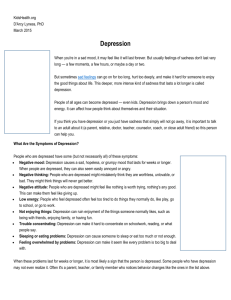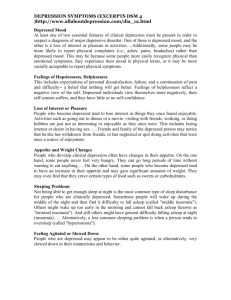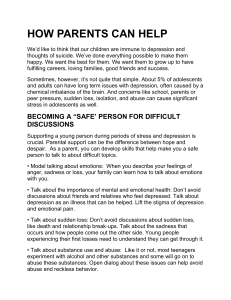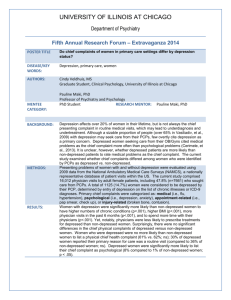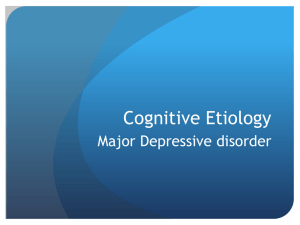DEALING WITH A DEPRESSED KEY EMPLOYEE A depressed key
advertisement
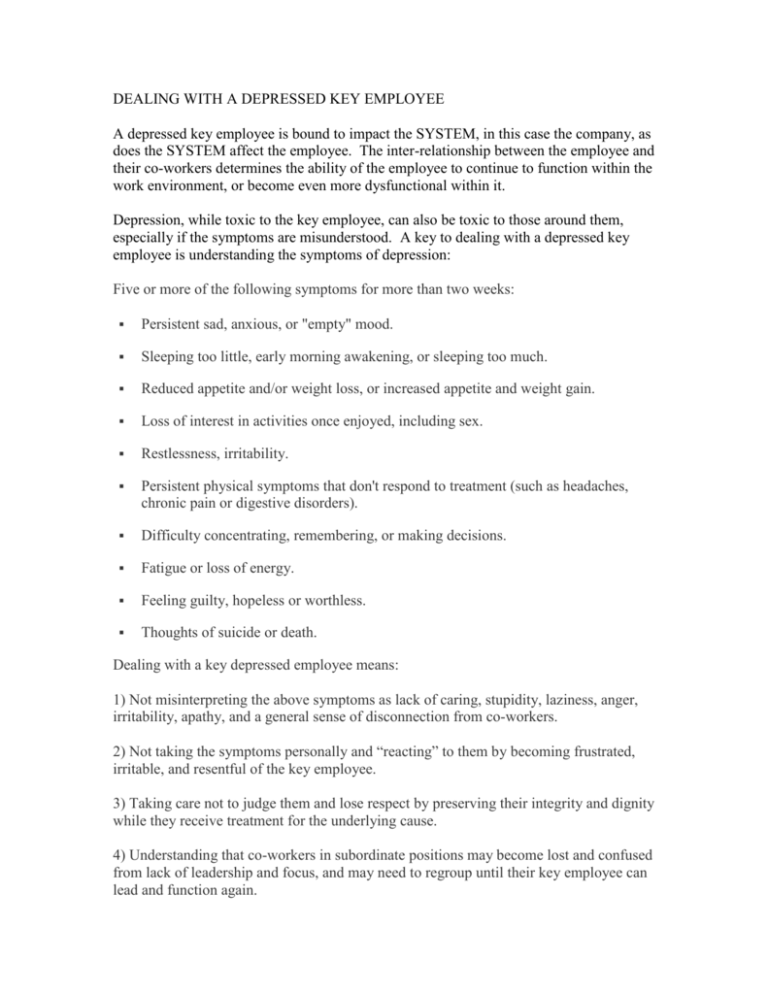
DEALING WITH A DEPRESSED KEY EMPLOYEE A depressed key employee is bound to impact the SYSTEM, in this case the company, as does the SYSTEM affect the employee. The inter-relationship between the employee and their co-workers determines the ability of the employee to continue to function within the work environment, or become even more dysfunctional within it. Depression, while toxic to the key employee, can also be toxic to those around them, especially if the symptoms are misunderstood. A key to dealing with a depressed key employee is understanding the symptoms of depression: Five or more of the following symptoms for more than two weeks: Persistent sad, anxious, or "empty" mood. Sleeping too little, early morning awakening, or sleeping too much. Reduced appetite and/or weight loss, or increased appetite and weight gain. Loss of interest in activities once enjoyed, including sex. Restlessness, irritability. Persistent physical symptoms that don't respond to treatment (such as headaches, chronic pain or digestive disorders). Difficulty concentrating, remembering, or making decisions. Fatigue or loss of energy. Feeling guilty, hopeless or worthless. Thoughts of suicide or death. Dealing with a key depressed employee means: 1) Not misinterpreting the above symptoms as lack of caring, stupidity, laziness, anger, irritability, apathy, and a general sense of disconnection from co-workers. 2) Not taking the symptoms personally and “reacting” to them by becoming frustrated, irritable, and resentful of the key employee. 3) Taking care not to judge them and lose respect by preserving their integrity and dignity while they receive treatment for the underlying cause. 4) Understanding that co-workers in subordinate positions may become lost and confused from lack of leadership and focus, and may need to regroup until their key employee can lead and function again. From an analytic perspective, depression can be viewed as anger turned inward. Depressed individuals often turn to defense mechanisms such as substance abuse— smoking, drinking, overeating, to cope with painful feelings. Shame, guilt, low self esteem, and hopelessness drive the key employee deeper into a dark hole of defense mechanisms that they find harder and harder to crawl out of. Offering support in the form of empathy, kindness, and patience gives them a lifeline. Gently guiding them into treatment gives them tools to heal. Dr. Rosenberg uses her Be The Cause System and Mind Map (seen at drjudyrosenberg.com) to bring light to the darkness of the disorder. If you look at her Mind Map and direct your eye to Panel 4--Cause Chaos, it depicts the lost and confused state of depression. Panel 5--Cause ISMS, depicts the loneliness and isolation of defense mechanISMS. Panel 6--Cause Clash of the ISMS depicts how depression can cause the depressed individual to turn their anger inward and implode (suicide being the ultimate implosion). It is through Panel 7, Interconnection (between the employee and their support system) that healing can take place. Dealing with depression in a key employee ultimately means interconnection as a pathway to healing.
